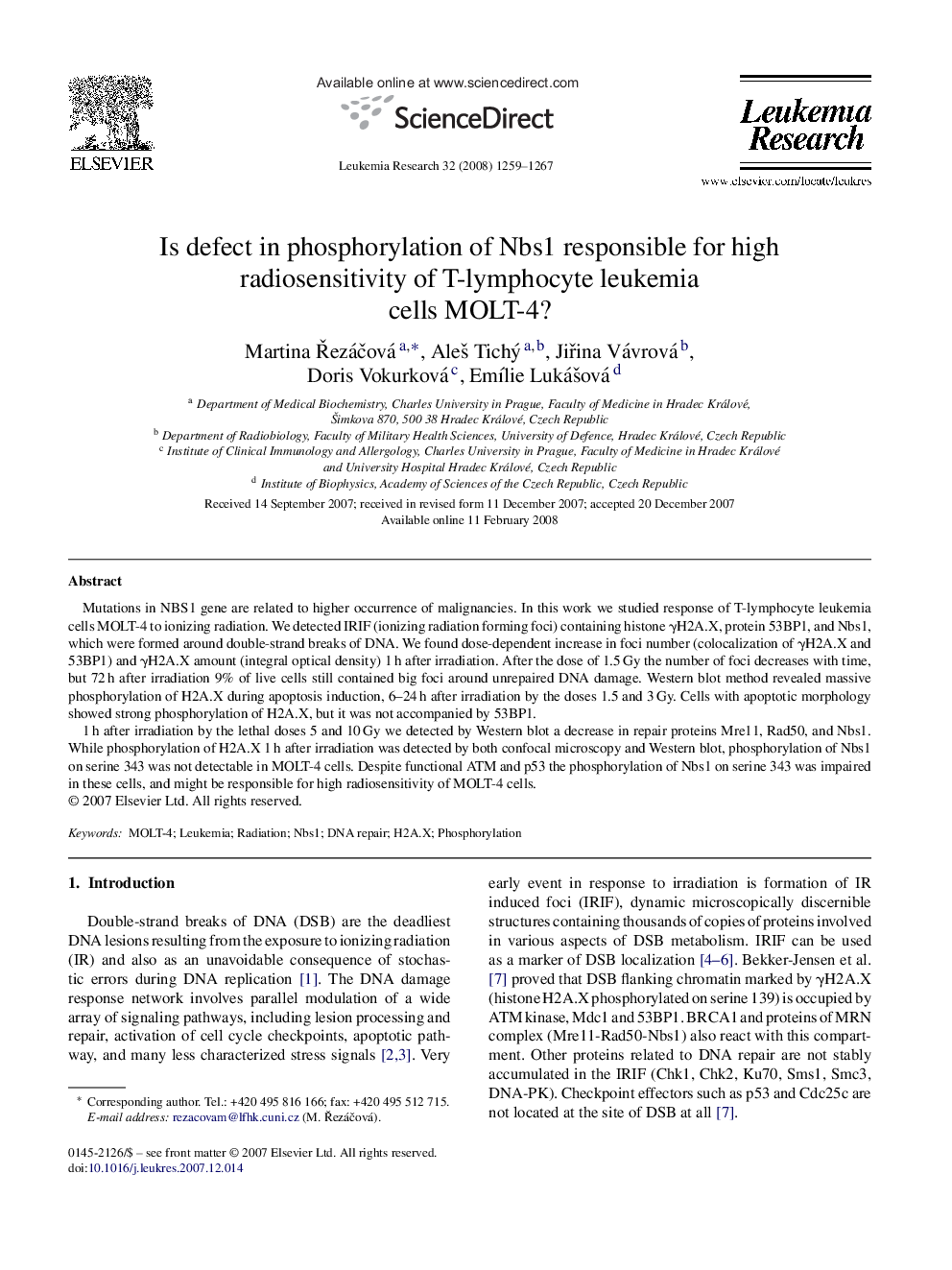| Article ID | Journal | Published Year | Pages | File Type |
|---|---|---|---|---|
| 2139313 | Leukemia Research | 2008 | 9 Pages |
Mutations in NBS1 gene are related to higher occurrence of malignancies. In this work we studied response of T-lymphocyte leukemia cells MOLT-4 to ionizing radiation. We detected IRIF (ionizing radiation forming foci) containing histone γH2A.X, protein 53BP1, and Nbs1, which were formed around double-strand breaks of DNA. We found dose-dependent increase in foci number (colocalization of γH2A.X and 53BP1) and γH2A.X amount (integral optical density) 1 h after irradiation. After the dose of 1.5 Gy the number of foci decreases with time, but 72 h after irradiation 9% of live cells still contained big foci around unrepaired DNA damage. Western blot method revealed massive phosphorylation of H2A.X during apoptosis induction, 6–24 h after irradiation by the doses 1.5 and 3 Gy. Cells with apoptotic morphology showed strong phosphorylation of H2A.X, but it was not accompanied by 53BP1.1 h after irradiation by the lethal doses 5 and 10 Gy we detected by Western blot a decrease in repair proteins Mre11, Rad50, and Nbs1. While phosphorylation of H2A.X 1 h after irradiation was detected by both confocal microscopy and Western blot, phosphorylation of Nbs1 on serine 343 was not detectable in MOLT-4 cells. Despite functional ATM and p53 the phosphorylation of Nbs1 on serine 343 was impaired in these cells, and might be responsible for high radiosensitivity of MOLT-4 cells.
